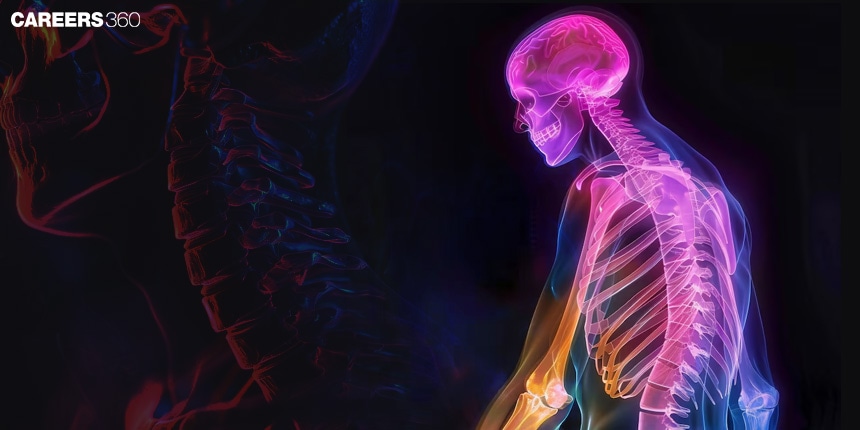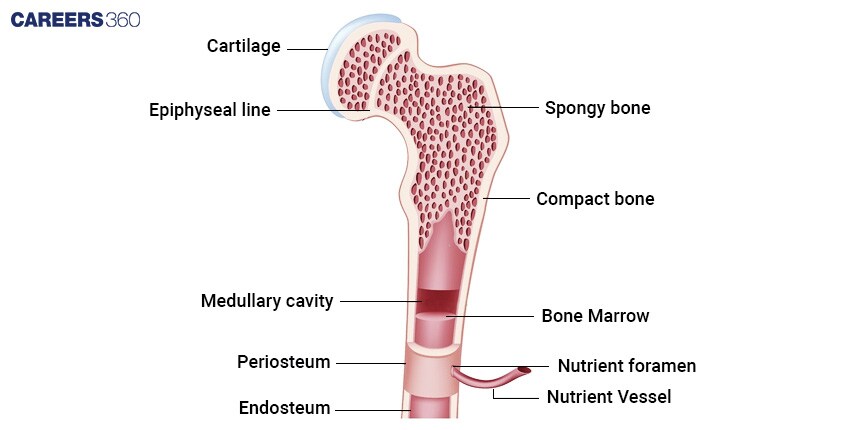List of the 206 Bones in Our Body
The human skeletal system is a very intricate framework of bones that provides structural support, protects some vital organs, and facilitates movement through its association with muscles. In an adult, there are 206 bones, which are divided into two major categories which are the axial skeleton, which includes the skull, vertebral column, and rib cage, and the appendicular skeleton, consisting of limbs and girdles. This list is one of the most important in the Human Locomotion and Movement chapter in Biology.

Names of the 206 Bones
The human skeleton is composed of 206 bones, which are grouped into the axial skeleton and appendicular skeleton:
Axial Skeleton (80 Bones)
This includes:
Skull (22 Bones)
Cranial Bones (8)
Facial Bones (14)
Hyoid Bone (1)
Auditory Ossicles (6)
Vertebral Column (26)
Cervical Vertebrae (7)
Thoracic Vertebrae (12)
Lumbar Vertebrae (5)
Sacrum (1)
Coccyx (1)
Thoracic Cage (25)
Sternum (1)
Ribs (24)
Appendicular Skeleton (126 Bones)
This part of our skeleton system consists of the bones which are discussed below:
Pectoral Girdle (4)
Clavicles (2)
Scapulae (2)
Upper Limbs (60)
Humerus (2)
Radius (2)
Ulna (2)
Carpals (16)
Metacarpals (10)
Phalanges (28)
Pelvic Girdle (2)
Hip Bones (2)
Lower Limbs (60)
Femur (2)
Patella (2)
Tibia (2)
Fibula (2)
Tarsals (14)
Metatarsals (10)
Phalanges (28)
Also Read:
The Human Skeletal System
The human skeletal system can be considered to be divided into axial skeleton and appendicular skeleton are axial consists of 80 bones involving the skull, vertebral column, and thoracic cage that is, the central support and protection of vital organs and appendicular, composed of 126 bones of limbs and girdles like a pelvic girdle and pectoral girdle which are involved in mobility functions. Bones are composed of collagen and calcium phosphate, which serve to provide bones with strength and a little flexibility.
The Role of Bones in the Human Body
Bones support structurally and maintain the form of the human body within the human body. For example, the bones protect the organs such as the brain, the heart, and the lungs, which are among the important organs that are considered protection sites by the bones. Other important functions that bones play include their function as a mineral reserve, specifically for calcium and phosphorus, and also for hematopoiesis the production of blood cells within the bone marrow.
Anatomy of Bones
Bones are solid structures that make the skeleton of a human body, supporting, protecting, and helping it to move. Mostly made up of a collagen fibre matrix and mineral deposits in the form of calcium and phosphate, bones are both stiff and light. Outside, they have dense compact bone and inside spongy bone with bone marrow to produce blood. Bones are dynamic tissues, remodelled continuously by osteoblasts, the bone-forming cells, and osteoclasts, the bone-resorbing cells, to suit stresses or repair damage. They store minerals and maintain homeostasis in the body.
Diagram: Bone Anatomy

Also Read: |
Recommended Video
Human Skeletal System:
Frequently Asked Questions (FAQs)
An adult human body contains 206 bones.
It is the stapes, inside the middle ear.
Bones grow and develop through ossification, including the gradual replacement of cartilage with bone.
Bones provide a structural framework, protection for organs, movement, mineral storage, and manufacturing sites for blood cells.
The axial skeleton comprises the central axis bones, while the appendicular skeleton includes limb bones and girdles.
Also Read
30 Nov'24 06:17 PM
28 Nov'24 05:27 PM
28 Nov'24 04:14 PM
28 Nov'24 03:07 PM
28 Nov'24 03:06 PM
28 Nov'24 01:21 PM
28 Nov'24 12:16 PM